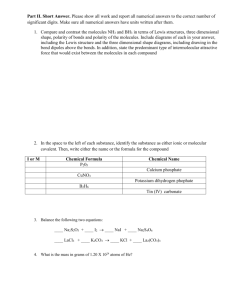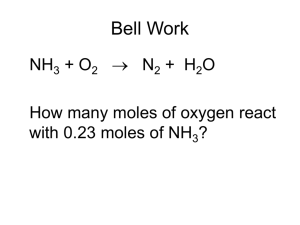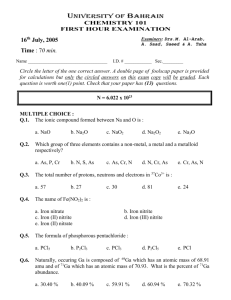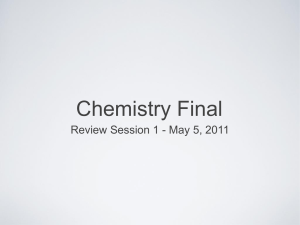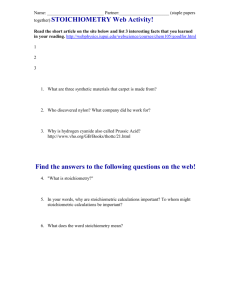Stoichiomety and Excel: Limiting Reagents
advertisement
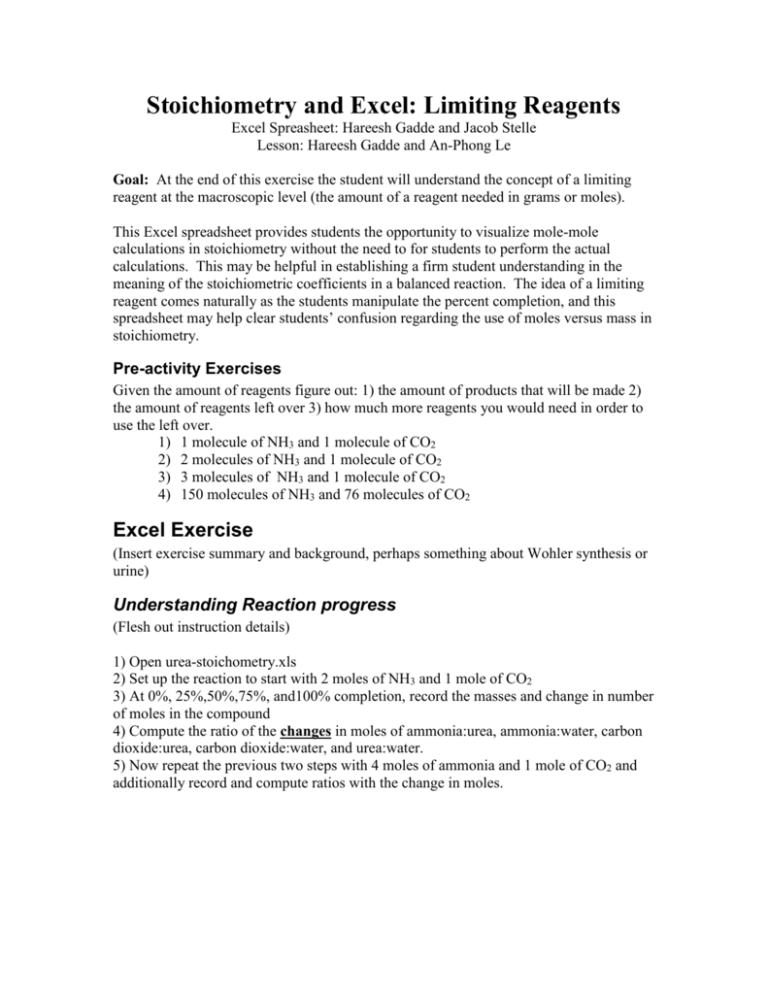
Stoichiometry and Excel: Limiting Reagents Excel Spreasheet: Hareesh Gadde and Jacob Stelle Lesson: Hareesh Gadde and An-Phong Le Goal: At the end of this exercise the student will understand the concept of a limiting reagent at the macroscopic level (the amount of a reagent needed in grams or moles). This Excel spreadsheet provides students the opportunity to visualize mole-mole calculations in stoichiometry without the need to for students to perform the actual calculations. This may be helpful in establishing a firm student understanding in the meaning of the stoichiometric coefficients in a balanced reaction. The idea of a limiting reagent comes naturally as the students manipulate the percent completion, and this spreadsheet may help clear students’ confusion regarding the use of moles versus mass in stoichiometry. Pre-activity Exercises Given the amount of reagents figure out: 1) the amount of products that will be made 2) the amount of reagents left over 3) how much more reagents you would need in order to use the left over. 1) 1 molecule of NH3 and 1 molecule of CO2 2) 2 molecules of NH3 and 1 molecule of CO2 3) 3 molecules of NH3 and 1 molecule of CO2 4) 150 molecules of NH3 and 76 molecules of CO2 Excel Exercise (Insert exercise summary and background, perhaps something about Wohler synthesis or urine) Understanding Reaction progress (Flesh out instruction details) 1) Open urea-stoichometry.xls 2) Set up the reaction to start with 2 moles of NH3 and 1 mole of CO2 3) At 0%, 25%,50%,75%, and100% completion, record the masses and change in number of moles in the compound 4) Compute the ratio of the changes in moles of ammonia:urea, ammonia:water, carbon dioxide:urea, carbon dioxide:water, and urea:water. 5) Now repeat the previous two steps with 4 moles of ammonia and 1 mole of CO2 and additionally record and compute ratios with the change in moles. Understanding partial mole amounts (Give more steps and questions) 1) Use the slider to place 100 grams of ammonia and carbon dioxide. 2) Run the reaction to 100% completion. 3) Compute the total number of moles of each product that were made and the number of moles of each reagent left. 4) How many more grams of the limiting reagent are needed to ensure that if the reaction was ran to 100% completion there would be no reagent left?
